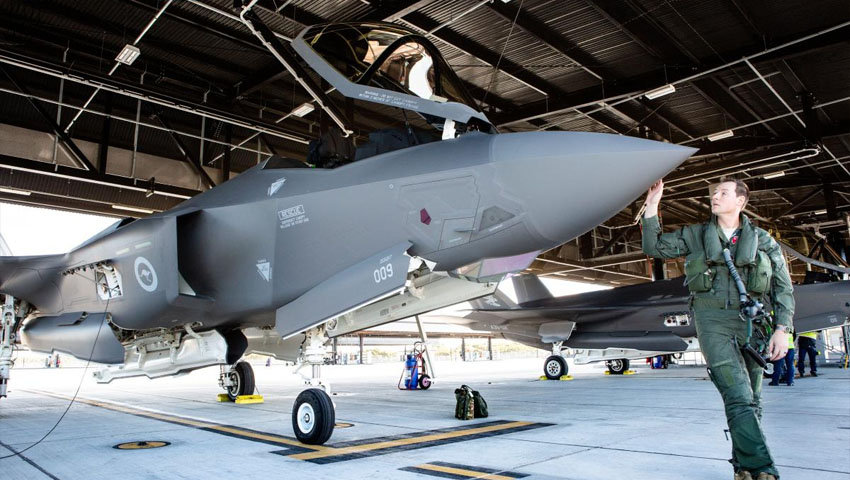The network-centric focus of the fifth-generation F-35 is one the platform’s key force multipliers, now the distributed mission training system is enabling F-35 pilots to train around the world, integrating with key allied capabilities and platforms seamlessly.
To continue reading the rest of this article, please log in.
Create free account to get unlimited news articles and more!
An F-35 pilot at Nellis Air Force Base, Nevada, enters the F-35 Full Mission Simulator to conduct a training mission. At the same time, more than 8,000 kilometres away at Misawa Air Force Base, Japan, an F-16 pilot settles into an F-16 simulator to participate in the same training exercise.
For the first time, the two will train together in the same simulated environment, preparing for what they will face in the battlefield – distributed mission training (DMT) makes this possible.
F-35 DMT connects F-35 Full Mission Simulators (FMS) with other users in a geographically dispersed environment to create a shared virtual training experience.
The DMT system is much like online multi-player gaming, which allows users to play and connect despite physical distance, and allows pilots to train together, in real-time, to conduct large force exercises using multiple US Air Force aircraft platforms.
To date, compatible aircraft platforms include the F-35, F-22, F-16CM, F-15C, and E-3C Sentry. By combining these aircraft into a single simulation, the military can now train like they fight.
Before F-35 DMT, F-35 simulators only allowed up to four pilots at a facility to fly together in simulated combat. Think of it like playing a video game with three friends on the same console.
Now, DMT links pilots at Nellis AFB to pilots at other bases through an existing distributed network enabling simulated training events with existing fourth-generation and fifth-generation platforms, taking online multi-player gaming technology from your living room to the battlefield.
Ian Newcomb, F-35 DMT lead systems engineer, explained, "Achieving F-35 DMT is huge for the F-35 training program and for Combat Air Forces (CAF) training, in general. It’s the first time that pilots across the USAF can conduct virtual training events with the F-35."
Unlike online multi-player gaming where everyone is playing the game together over a network, multiple training devices produced by different contractors with unique software make up the Air Force distributed training network. Meaning, the devices may “speak the same language” but depending on the implementation, the dialect could be entirely different.
To communicate across all devices, a lot of data translation needs to occur. Further compounding the challenge of creating a fair fight, each system brings additional complexity with its response to simulated threat environments, unique program data security restrictions, and even subtle differences in visualisations of weather conditions.
"Not only are we benefitting F-35 pilots who are learning new techniques and tactics with other aircraft such as the F-22, F-16CM, F-15C, and E-3C, but we are also advancing training for those other aircraft operators who get to virtually fly for the first time with the F-35," Newcomb explained.
As additional capabilities are added to the fleet of CAF aircraft and threats are developed by the adversary, virtual training requirements will require continuous evolution and improvement.
Supported by the DMT capability, the F-35 training enterprise continues to evolve, so that the warfighter maintains mission readiness with the rest of the fleet against the ever-evolving adversary landscape.

 Login
Login







